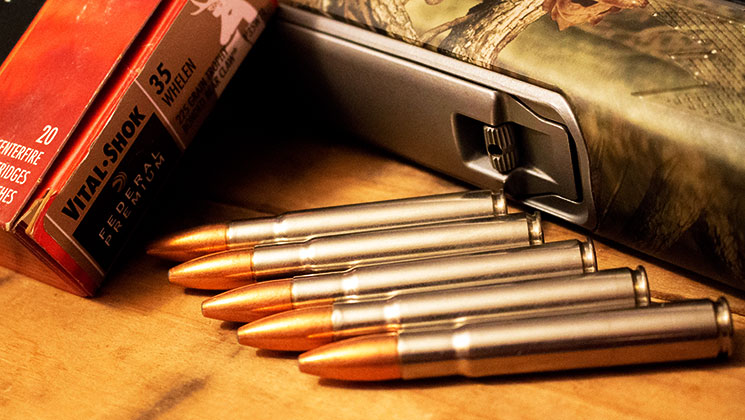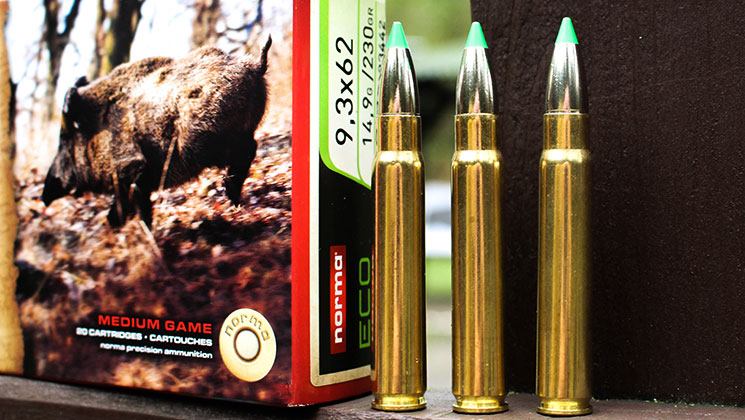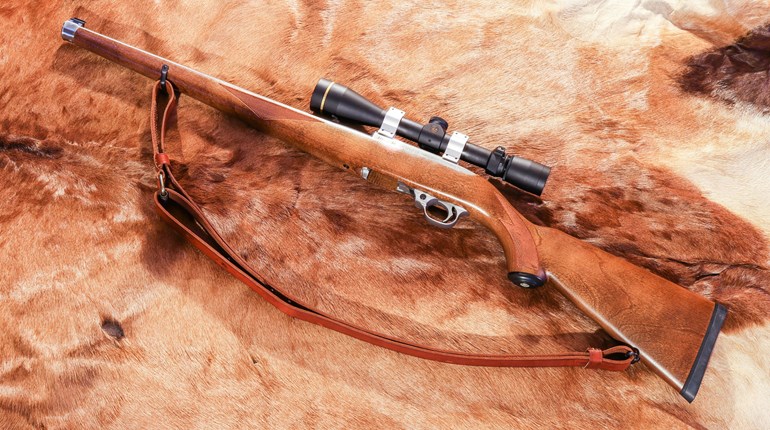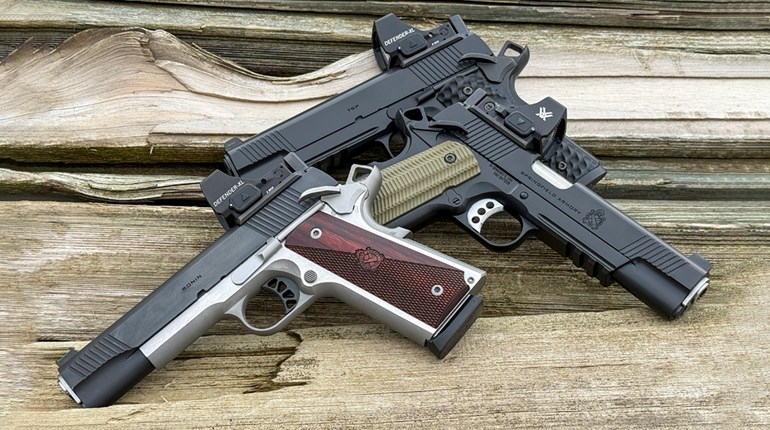
“Only accurate rifles are interesting.” Col. Townsend Whelen had an undeniable influence on the shooting world, and the most popular of the cartridges that bear his name is an undeniable success. While it took a while for the .35 Whelen to gain its SAAMI-approved status—Remington legitimized the cartridge in 1988—it has been with us since the early 1920s, when Col. Whelen and James V. Howe (of Griffin & Howe fame) designed the American answer to the .318 Westley Richards and .350 Rigby, making a perfectly sound cartridge for all but the biggest and most dangerous game of Africa and Asia. Stories, and sources, differ as to whether or not Whelen actually had a hand in the development (he wrote a 1923 American Rifleman article claiming to having developed it, though other stories say it was a Howe development solely), but nonetheless, the .30-06 case necked up to hold .358-inch bullets bears the Whelen moniker. It uses bullets between 180 and (rarely) 300 grains, with factory loads centered around the 180, 200, 225 and 250-grain slugs. It’ll push the big 250s at just about 2500 fps, depending on ammo manufacturer and rifle. The case length is the same as its father’s: 2.494 inches or 63mm.

Otto Bock, a gunsmith from Berlin, Germany, designed a cartridge for the numerous German emigrants in Africa that would effectively handle the wide selection of game animals in an affordable and dependable rifle. The Mauser 98 was an obvious choice, and the bullets for the 9.3x74R—introduced around 1900—were plentiful. Bock used a case head that would fit the 98 Mauser’s bolt face, but in a case 62mm in length, which would drive a 286-grain at a velocity of 2150 fps; at least that was the initial loading in 1905. It was a handy cartridge in a handy rifle, and quickly developed a solid reputation among those who had to live day-to-day with the beasts of Africa. It was easy on the shoulder, it was accurate and it was available. Unfortunately, it went relatively unnoticed here in the United States. After the World War I, the load was revised to drive the 286-grain bullet at 2350 fps (or so), making an already good cartridge into a great cartridge, nearly the equal of the mighty .375 H&H Magnum. The 9.3mm bore diameter translates to .366-inch—right in the ballpark of the .35 Whelen—and offers good frontal diameter for large wound channels. The cartridge has been used for all animals, including elephant.
So we’ve got two similar cartridges, with cases within a millimeter in length, and a bullet diameter just a few thousandths apart. Let’s look at the differences, and see which makes the better choice. Firstly, regarding the original purpose of the 9.3x62mm Mauser, many countries have prohibited the use of bore diameters less than .375-inch, which does the 9.3mm bores a disservice. They have proven themselves—especially with the 286- and 300-grain loads—to make a perfectly viable choice on dangerous game. That aside, both the 9.3x62mm Mauser and .35 Whelen are stellar performers on the larger, non-dangerous animals of Africa—like the eland, sable and zebra—as well as the largest ungulates here in North America, like the elk and moose, and yes, they both make a great bear rifle.
Secondly, both are on the heavy side for deer, but can and will be used with good effect, often doing less meat damage that the fast magnums will. A heavy bullet at moderate velocities is a time-proven recipe, especially inside of 200 yards. With premium bullets, lighter bullets can be employed in both cartridges without fear of premature bullet breakup, further extending the flexibility of both cartridges. A .35 Whelen with a 200-grain premium bullet at 2700 fps offers a decent trajectory, as does the 230-grain 9.3x62mm Mauser load at 2650 fps. We’re starting to see just how close these two can be.

For the reloader, both cases can be created from plentiful .30-06 Springfield brass, should you need to do so. Both cases are rather efficient in their powder consumption, and both cartridges are relatively easy on the shoulder, especially in comparison to some of the super-magnums.
Who gets the crown? Which of these would a hunter choose, and why? As undeniably cool as the .35 Whelen is—and I’m definitely a fan—I’ve got to give the trophy to Herr Bock’s creation. The reason is relatively simple; I feel the ability to use the 286- and 300-grain bullets in the 9.3x62mm Mauser gives a decided advantage to the .35 Whelen. Most of the .35 caliber cartridges top out with 250-grain bullets, as do the .338 caliber cartridges. Some could argue that the additional frontal diameter makes the .35s more desirable than the .338s, though I’d immediately counter with the idea that the .338’s better sectional density figures offers better penetration.
I personally feel that if the .35s were available with a 275-grain bullet in popular factory loads, they’d be better served. The 9.3x62—like many British and European designs—has the long, heavy bullet thing figured out, offering an appropriate twist rate to properly stabilize these bullets. I’ve spent a decent amount of time with both cartridges, with both factory ammunition as well as developing handloads for each. I also had the privilege of using the 9.3x62mm Mauser in a nice Heym SR21 rifle with Norma’s 230-grain Eco Strike load to take a big Polish wild boar. It was a long shot for a red-dot sight, but both the cartridge and the bullet did their job just fine. For those few areas in Africa where the 9.3x62 is legal for dangerous game—Mozambique comes quickly to mind—it will take buffalo cleanly, especially when loaded with heavy softpoints and backed up by equally heavy solids.
If you’re a .35 Whelen guy, I get it. It has an American flair, it commemorates a great American ballistician and it does get the job done. Though it is not nearly as popular in the United States, I feel the 9.3x62 offers a little bit more in a similar package. Bullet weights are available in 230, 250, 270, 285/286, 300 and even 325 grains, whether factory loaded or in component form, and that’s a pretty wide selection. There are spitzer boattails, round nose, bonded core, monometal and solids available, so there’s literally something for everyone for this cartridge. American companies now load for it, and there are some great European loads as well. Thank you, Herr Bock; you nailed it.
Looking for previous installments of our "Head to Head" series? We've got you covered.
• .416 Rigby vs. .416 Remington Magnum
• .308 Winchester vs. .30-06 Springfield
• .22 Nosler vs. .224 Valkyrie
• .300 Win. Mag. vs. .300 WSM
• .223 Remington vs. .22-250 Remington




































